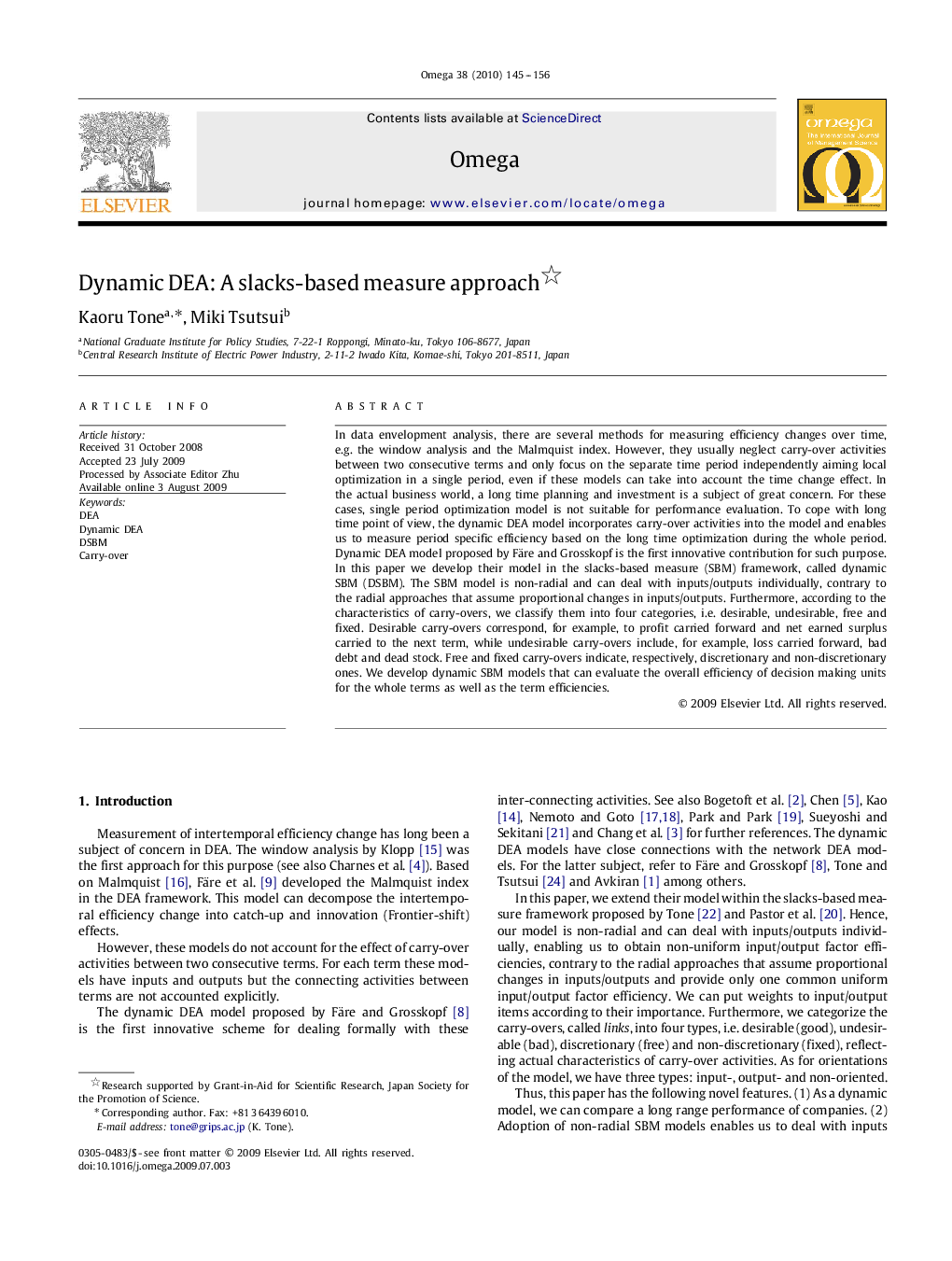| کد مقاله | کد نشریه | سال انتشار | مقاله انگلیسی | نسخه تمام متن |
|---|---|---|---|---|
| 1033084 | 1483685 | 2010 | 12 صفحه PDF | دانلود رایگان |

In data envelopment analysis, there are several methods for measuring efficiency changes over time, e.g. the window analysis and the Malmquist index. However, they usually neglect carry-over activities between two consecutive terms and only focus on the separate time period independently aiming local optimization in a single period, even if these models can take into account the time change effect. In the actual business world, a long time planning and investment is a subject of great concern. For these cases, single period optimization model is not suitable for performance evaluation. To cope with long time point of view, the dynamic DEA model incorporates carry-over activities into the model and enables us to measure period specific efficiency based on the long time optimization during the whole period. Dynamic DEA model proposed by Färe and Grosskopf is the first innovative contribution for such purpose. In this paper we develop their model in the slacks-based measure (SBM) framework, called dynamic SBM (DSBM). The SBM model is non-radial and can deal with inputs/outputs individually, contrary to the radial approaches that assume proportional changes in inputs/outputs. Furthermore, according to the characteristics of carry-overs, we classify them into four categories, i.e. desirable, undesirable, free and fixed. Desirable carry-overs correspond, for example, to profit carried forward and net earned surplus carried to the next term, while undesirable carry-overs include, for example, loss carried forward, bad debt and dead stock. Free and fixed carry-overs indicate, respectively, discretionary and non-discretionary ones. We develop dynamic SBM models that can evaluate the overall efficiency of decision making units for the whole terms as well as the term efficiencies.
Journal: Omega - Volume 38, Issues 3–4, June–August 2010, Pages 145–156